Small and adorable, miniature sheep breeds have become very quickly a popular trend for both farmers as well as pet owners.
Let’s first start with the farmers and why is a good idea and business to raise miniature sheep.
If you have a farming business, then you can use these miniature sheep to make your business even more profitable and efficient. Unlike the other larger animals, these mini sheep do not produce too much milk or meat, but they can be better monetized by selling their famous wool to different wool production businesses or to raise them as hobby farming and selling them as pets.
Not to mention the fact that the maintenance costs of these sheep are much lower than other large animals.
Moving on from the farming business, miniature sheep make great pets as well! They became increasingly popular as pets due to their calm and docile temperament, and small dimensions, as they do not require large spaces.
Sheep breeds such as Shetland, Southdown, Quessant, or Cheviot are perfect for pet ownership.
With their easy maintenance and potentially profitable purposes, these small animals offer a lot of potential for both farmers and pet owners. Whether it be a small business venture or just a furry companion, miniature sheep are sure to bring joy to any situation!
Contents
Harlequin sheep
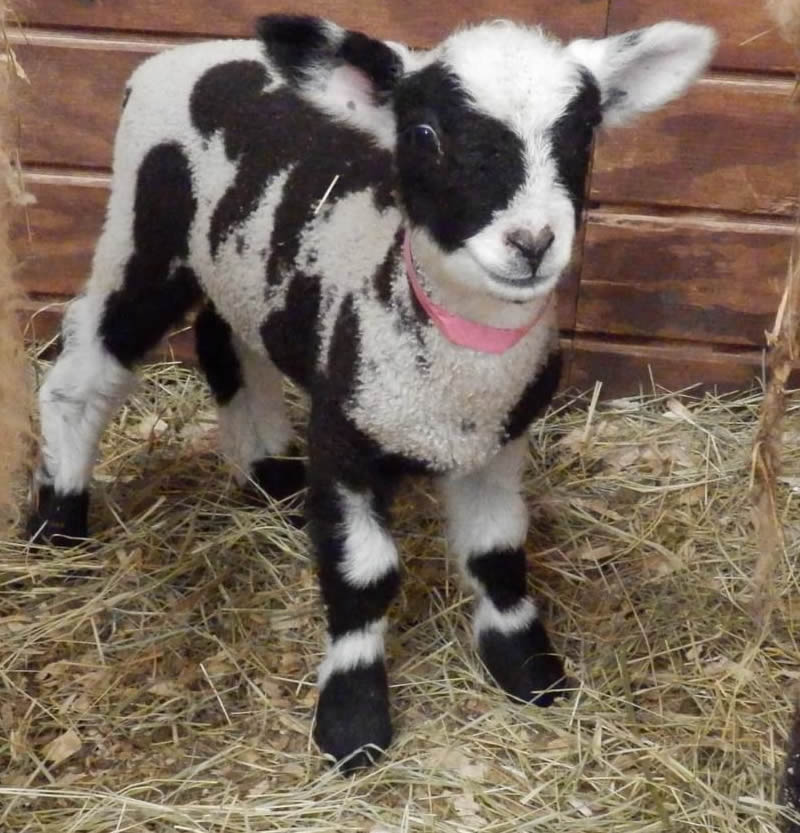
The first miniature sheep that we will present to you is the Harlequin sheep.
This miniature sheep was created 41 years ago by Kathleen Sterling, the owner of Black Sheep Farm East, located in Virginia. The creation of this miniature sheep breed was possible by crossing several breeds such as Karakul, Tunis, Lincoln, Southdown, Montadale, Corriedale, Granita Leicester, and Romney.
Harlequin miniature sheep became standardized more than 15 years ago, but some farmers continue the work of Kathleen Sterling by trying to improve this breed even more. Moreover, one of their main goals is to reach the number of 500 healthy lambs of the pure Harlequin breed to be able to continue the development by crossbreeding the Harlequin breed with the Babydoll Southdown sheep breed.
Harlequin sheep can be found in white, brown, gray, and tan and are popular for their medium length and very fine wool.
When it comes to size, this miniature sheep has a 23-inches height and can weigh between 80 and 120 lbs. At maturity, rams can reach a weight between 90 and 150 lbs.
Other appearance characteristics are a moderately long face and muzzle, thick ears, large yellow, brown, or blue eyes, and wool that is between 25-35 microns and 3″-6″ long.
Harlequin sheep can be raised easily because they are not pretentious, not prone to certain diseases, and do not have horns, so they are easy to handle. So, if you are looking for a mini sheep as a pet, the Harlequin sheep can be a great choice. The Harlequin mothers are devoted and can give birth to up to multiple lambs at once.
In terms of care and feed, they need a full series of CDT vaccinations, deworming, and tail banding to keep them clean, comfortable, calm, and healthy, and lots of fresh grass.
Moreover, there were only 16 American Purebred sheep in the registry in 2020, making it a great opportunity for success in this market.
Southdown Sheep – Olde English Babydoll Southdown Sheep
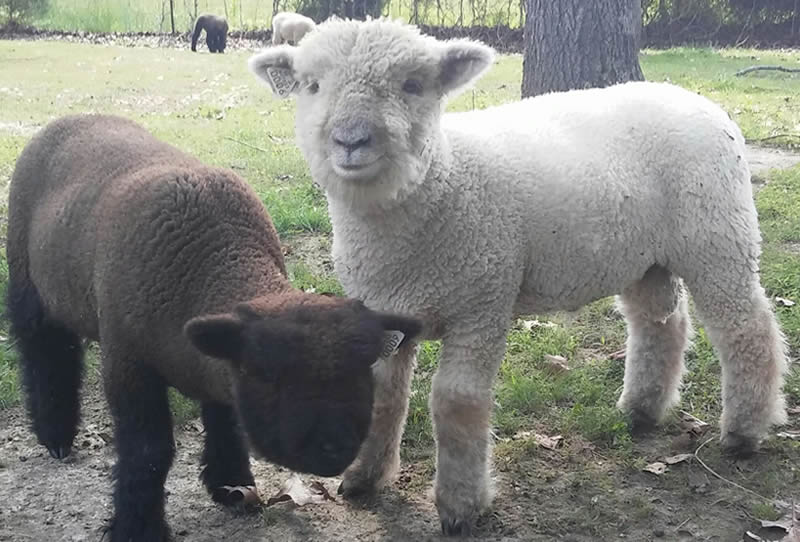
Meet the Southdown miniature sheep breed! Known as the oldest purebred sheep breeds in the world, the Southdown history started somewhere in 1650-1700. The sheep’s name is inspired by its originating location, which was Sussex, England, also known as the “Downs”.
The history of this breed of sheep is a short one.
Although this breed has existed for several centuries, its written history is short. In the 1700s, the Southdown breed was bred and preferred by some for its flavorful meat. John Ellman was the person that started to standardize the British version of the Southdown Sheep in 1780. According to the literature, these sheep were imported to the United States between 1824 and 1829, and later, in 1960, they were imported to New Zealand, where they were used to expand the America Southdown breed.
Modern Southdown sheep are the result of successful crossbreeding in New Zealand, and they are larger than the British breed.
Almost extinct in 1900, the British, smaller version of the Southdown sheep was brought back to life by Robert Mock in 1986 when he created the “Olde English Babydoll Southdowns Registry“.
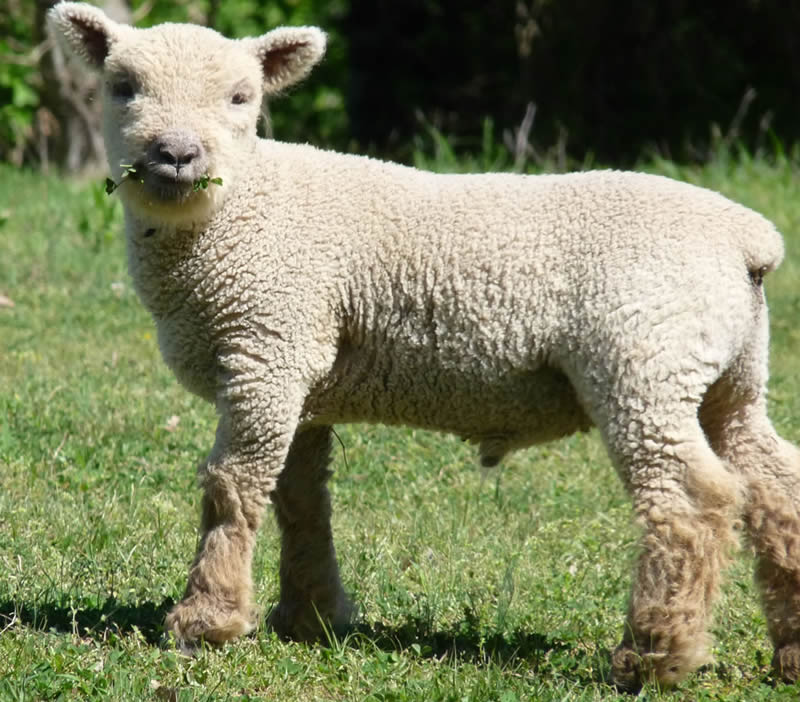
Babydoll Southdown sheep are 24 inches tall or less at the shoulder and can weigh between 60 and 125 pounds.
The breed’s standard also includes other features such as the face, which must not be very long and only in one color, large and prominent eyes, medium-sized ears, a long tail, and legs with a deep wide twist. The wool extends from the hocks to the knees and cheeks and is 24-28 microns in diameter with a slight elastic curl. Last but not least, the only colors for this breed are black, dilute, and spotted.
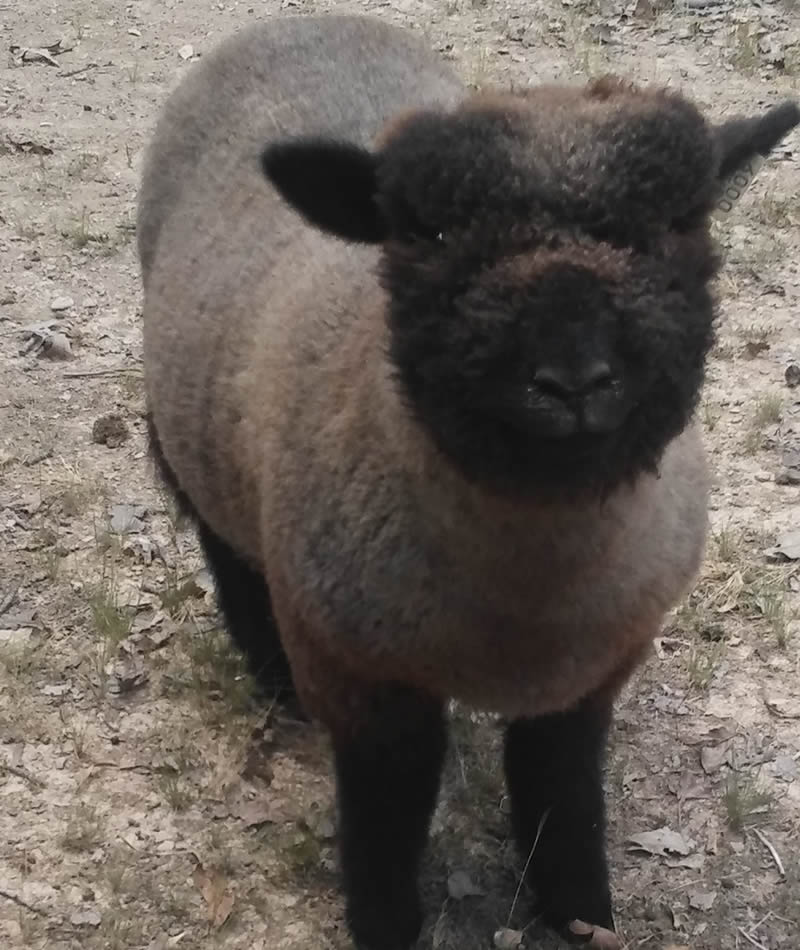
Because they are small and hornless, these sheep are calm and easy to take care of, making them perfect and adorable pets for you or your kids. Compared to other farm animals, these sheep need less space and less food. If you are a farmer and you are not interested in having this sheep as a pet, you should know that another advantage of raising this mini sheep is that you can use it as an organic weeder. They fertilize the soil and feed only on unwanted weeds because of their height, which does not help them reach the fruits of trees.
These sheep are good mothers and often give birth to twins or even triplets.
Related videos:
Ouessant sheep
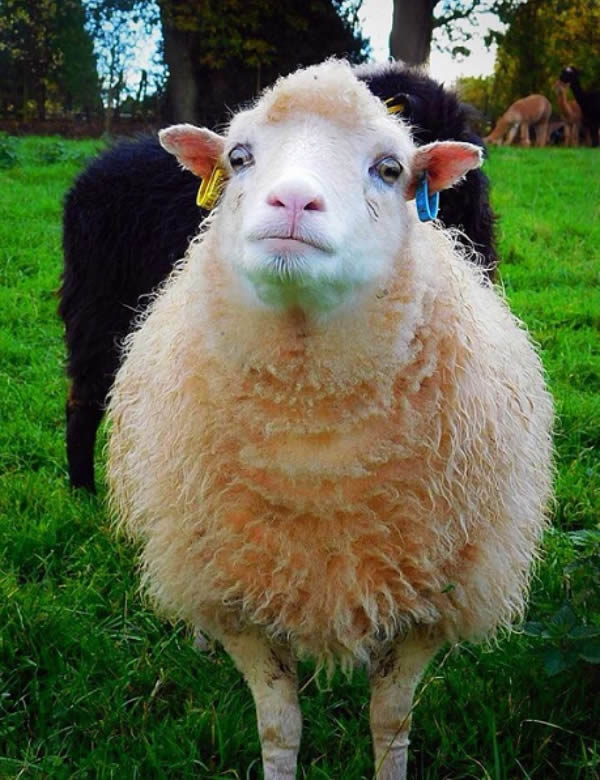
The Ouessant sheep is not only a miniature sheep but also the smallest sheep in the world. With an unclear history, Quessant sheep originate from the island of Quessant off the coast of Brittany, France. According to the Quessant Sheep Society, this is the smallest breed of sheep in the world, and the size of this sheep would be the result of an adaptation to the cold and harsher Atlantic weather.
Some stories say that this breed of sheep was brought to this island by Vikings in the 19th century and that it was bred for its wool and meat. In the 20th century, this miniature sheep breed was in danger of extinction, but it was saved by some aristocrats, and now, it is bred in several countries in Europe and Great Britain, but it is still classified as a rare breed and at risk.
The height of an adult Quessant sheep can reach 18.1 inches (46 cm) in an adult ewe and 19.2 inches (49 cm) in an adult ram. The average weight of a Quessant sheep is 45 lbs (20 kg). Other officially recognized characteristics of the Quessant breed are prominent eyes, horns, and a head that must present a continuous line from the withers to the forehead, a round neck, round-tipped ears, and a white, black, or brown coat with 25-28 microns. Their whole body is covered with fur, even their face, and they are preferred among those who work in wool production.
Due to the fact that Quessant sheep are very small, they do not need a lot of land, but neither do they need a lot of food. Moreover, they are docile and friendly and adapt very quickly to the environment. Some people acquire them as pets or for hobby farming.
When it comes to reproduction, the Quessant sheep reproduces quite well. They have a gestation period of 149-155 days and another period of 240 days of lactation. The maternal instinct is also very prominent.
Related videos:
Shetland Sheep
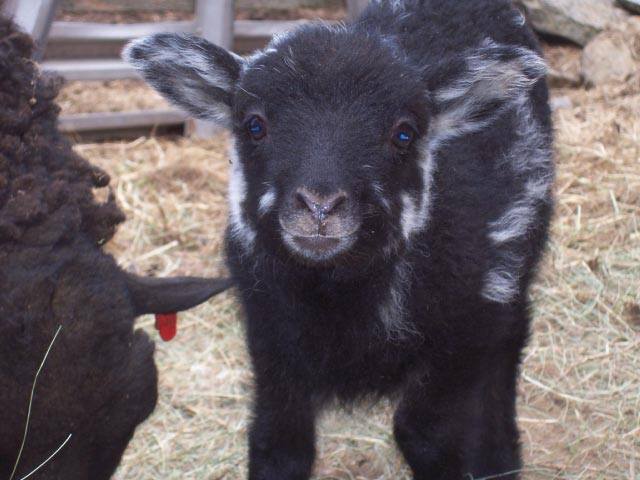
Originating from Shetland Isles, Scotland, the Shetland sheep were brought to the islands by Vikings approximately 1,000 years ago. Thriving in cold climates, this sheep breed is descended from Scandinavian sheep and is a member of the short-tailed sheep breeds from the north, but this is not officially confirmed. This breed was on the verge of extinction and even in 1970, it was classified as Category 2 (endangered). Over time, Shetland sheep began to be bred by small farmers, reaching 3000 sheep in Great Britain, which helped it to reach Category 6 (other native breeds).
Shetland sheep have as standard characteristics a face of medium length, a small mouth, a prominent nose, medium ears, a medium chest, a fluke tail, and wool in colors such as white, moorit (reddish to fawn), black, and gray and with an average thickness of 23 microns.
The weight of an adult Shetland sheep can vary between 90-125 lbs (41-57 kg) for rams and 75-99 lbs (34-45 kg) for ewes. Their lifespan is about 10 to 12 years.
The Shetland sheep can be used for farming purposes due to their high-quality, soft wool. The breed also produces an abundance of milk which can be used to produce cheese or other dairy products. Additionally, the meat from Shetland Sheep is leaner and more tender than the meat from other breeds.
As pets, Shetland Sheep are docile and easy to manage. They need regular grooming to keep their coats free from mats and tangles. So, you should own a comb and a sheep shear for their periodic care.
These sheep also love being around people and can bond easily with their owners.
Cheviot Sheep – American Miniature Brecknock
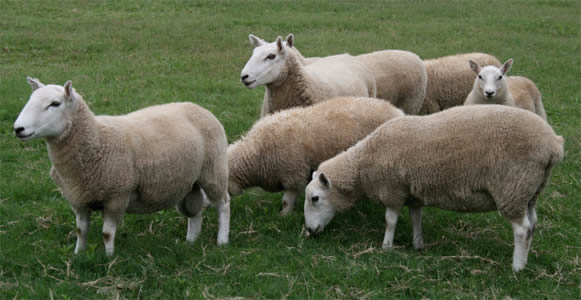
The mini Cheviot sheep share the same history as the normal-sized Cheviot sheep, and it is also known as the American Miniature Brecknock.
The old Cheviot is a sheep originating from Scotland and Northumberland, England. The Cheviot sheep were developed by crossing multiple breeds such as Shetland, Lincolns, Merinos, and Southdown. Some say that the sheep have been developed in the late 1500s, but nobody can confirm the exact origins of this breed.
This breed enjoyed popularity among farmers in England, Scotland, Wales, and Northern Ireland. This breed of sheep was exported for the first time from Scotland to North America in 1838.
As for the miniature Cheviot sheep, it is said that it was imported to America from Canada through a Washington cattle auction. Even though a similar sheep was identified in northern Wales, this mini sheep was named the American Miniature Cheviot sheep in 2006.
It has a long body, wide and short legs, a Roman nose, and small and straight ears. The colors of this breed are white, black, light beige, and even gray. Some even come with a combination of colors, for example, white sheep have black legs and white faces. Their body is almost entirely covered with fine wool, but their legs are not. Their wool has an excellent curl, making it excellent for spinning into yarn.
When it comes to height, the mini Cheviot can have a maximum height of 23 inches (58 cm) measured at the withers after shearing and a weight of 45-85 lbs (20-38.5). The Cheviot ewes are devoted mothers and have good fertility, often giving birth to twins.
Temperamentally, these sheep are gentle, and calm, which makes them suitable as pets.
Related videos:
FAQ – Miniature Sheep
Yes, there are miniature sheep. Some of the mini sheep are smaller versions of the normal-sized sheep, while others have achieved this mini size as a result of numerous trials and cross-breeding over several generations.
All miniature sheep breeds can be a great choice as a pet. They are incredibly hardy animals and require little in the way of specialized care or equipment.
If you’re looking for an animal companion that is fun to have around, low-maintenance, and full of personality, then a miniature sheep breed may be just the pet for you!
The smallest sheep in the world is currently the Quessant sheep.
With the confirmed title of the smallest breed of sheep in the world, the Quessant sheep can reach a maximum height of 18.1 inches (46 cm) in an adult ewe and 19.2 inches (49 cm) in an adult ram.
As for their weight, they generally weigh no more than 45 lbs (20 kg).
Conclusion
Overall, miniature sheep can make an amazing addition to any family or hobby farm.
Their low maintenance needs and gentle disposition make them the perfect animal for those looking for an unusual pet or a unique livestock option. With proper care and attention, miniature sheep can provide years of companionship and enjoyment to their owners.
So, do you have a mini sheep as your pet? What kind of breed is it? Let us know in the comment section!

